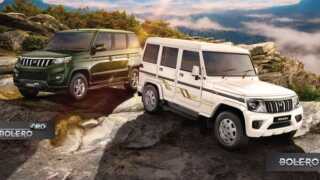Follow us today…
The 2025 GMC Sierra EV Denali Max, a full-size, fully-electric behemoth packing 754 horsepower, four-wheel steering, and over 400 miles of GM-estimated range. It can tow your boat, light your house during a blackout, and do a sub-five-second dash to 60, quietly.
But in the midst of this mechanical and electrical brilliance, a strange and subtle flaw is nagging at some owners. It’s not the powertrain. It’s not the range. It’s the software. Or more specifically: the user experience buried behind that sleek, Google-powered infotainment screen.
Recently, new owner Brandon Boone posted his experience in the GMC Sierra EV Group on Facebook, kicking off a surprisingly thoughtful thread that’s now emblematic of the digital divide in the EV space:
“I’m a proud new owner of a ’25 Denali Max, and I love everything about my new ride EXCEPT the infotainment system. I find the overall experience borderline criminal and have three main issues that have informed my perspective over the first two weeks with the truck. My hope is to share my experience and see if others feel the same way, and hopefully/maybe learn about potential fixes to the issues I list below:
1. Infotainment Screen Customization is Restrictive
My initial thoughts about the infotainment system are that it feels very restrictive and committed to locking owners into a closed Android/Google ecosystem. For a $100k+ truck, I would expect more customization freedom to customize things. For example, I recognize that Google Maps is better than Apple Maps, but it is a massive downgrade for Waze users. I downloaded Waze from the Play Store, assuming I could switch the infotainment system’s default map to Waze, but the system won’t allow it. This means I am forced to use Google Maps if I want to see a map on my cluster screen or on the multi-view screen, which is a big time bummer.
2. No CarPlay is a BIG Miss
I realize that some people don’t care for CarPlay, but that doesn’t help the people who do! Yes, I’ve signed into all my apps and driven the daily and can honestly say that CarPlay (especially for iPhone users) is infinitely better, mainly due to the ability to customize the screen with the apps you actually want, enhancing the driving experience. Going from a lifetime of gas vehicles to an EV is already a steep learning curve, and now you’re adding a forced transition to Android Auto from Apple CarPlay? Unfortunately, it feels like a poke in the eye.
3. Mismatched Audio Experience
I love Sirius as much as the next person, but I also like the music and playlists I’ve created in Apple Music. While I still have access to those songs and playlists, there are literally no features to support them in the infotainment center that compare to how Sirius and the other audio options are displayed. For example, there doesn’t appear to be the ability to shuffle songs, and there is no album art (which Sirius offers for each song). This forces me to use my phone to control the music, which clearly is not what GMC wants, considering so many audio features are unavailable while the truck is moving.
Again, I love my truck and am super happy with everything except the infotainment system. Given the price tag and the time I spend in the vehicle, I wish more effort were put into creating a GREAT entertainment experience. What makes it worse is that GMC has blocked all the after-market options to get CarPlay, which would solve all these issues. If I had to rate my track, I’d give it everything but the infotainment system an A, and the infotainment system a D.”
The responses in the comment section revealed a split personality in the ownership base: those who’ve adapted to Google’s system and those who pine for the simplicity and polish of CarPlay. Scott Long Jr. wrote, “I think the GMC UI overall is probably 10 years behind other EV manufacturers like Tesla and Rivian.” Still, he praises the truck routing features in Google Maps and the overall performance of the platform. The problem isn’t Google integration per se, it’s that GM ripped out CarPlay and Android Auto and replaced them with a walled garden that hasn’t bloomed yet.
2025 GMC Sierra EV Range & Options
- The GMC Sierra EV offers impressive range options, with higher-end models like the Denali Max Range achieving up to 460 miles on a full charge, making it suitable for long-haul drives without frequent stops.
- It delivers strong performance, including up to 760 horsepower in top trims, allowing for acceleration and handling in various driving conditions.
- Towing capacity reaches up to 10,000 pounds in premium configurations, positioning it as a capable work truck for hauling heavy loads.
- Lower trims have been introduced with more affordable pricing starting around $98,400 for advanced models, aiming to attract a broader buyer base amid fluctuating EV market demands
It’s not just about tech preferences, either. It’s about workflow, familiarity, and trust, three things Apple nailed early on, and which have since become second nature to millions of drivers. Tesla avoided both, but made up for it with a native interface that feels like part of the car’s soul. GMC’s current offering feels more like a placeholder, polished but impersonal, like a loaner laptop from the IT department.
Even Boone himself acknowledges that Google Maps is solid. But, as user Chris Nicosia pointed out,
“If GM invested in the tech, nobody would care about the lack of CarPlay.”
That’s the rub. In the pursuit of building a fully in-house software ecosystem, arguably for long-term data control and monetization, GM has sidestepped the user.
Is Spotify Missing On The GMC Sierra EV?
Spotify is there, sure. But Apple Music? Limited. Waze? Installed, but can’t be set as the default. Shuffle button? Buried or missing. Album art? MIA. A flagship truck that can tow 9,500 pounds shouldn’t struggle to show you a playlist cover while you’re doing 70.
Advertising
To GM’s credit, the Sierra EV Denali Max is fundamentally excellent. The Ultium platform is solid. The truck’s stance and engineering are spot on. The suspension is smooth, the torque instantaneous. There’s a pride to the way this machine moves, an echo of the old Vortec V8s now refracted through silicon and kilowatts. But software is no longer a garnish. It is the experience.
As Brandon Boone put it, “What makes it worse is that GMC has blocked all the after-market options to get CarPlay, which would solve all these issues.” That lockdown creates frustration, especially when the hardware clearly has the chops to support more.
2025 GMC Sierra EV Dimensions and Wheelbase
- Dimensions include a length of about 233 inches, a width of 86 inches, and a height of 78 inches, providing ample space for crew cab setups and large cargo beds.
- The wheelbase measures around 145 inches, contributing to stability and roominess for passengers and gear in both on-road and off-road scenarios.
- It is built on GM’s Ultium platform, a flexible electric vehicle architecture that supports scalable battery sizes and modular designs for enhanced efficiency.
- This platform enables features like all-wheel drive and adaptive suspension, drawing from traditional Sierra designs while integrating modern EV tech for a seamless transition.
Still, the good news here is that this isn’t a terminal flaw; it’s a software problem.
And software can be fixed. GM has proven it can do over-the-air updates, and the EV architecture is built for evolution. They’re in a position to turn this around.
Chris Nicosia said it best:
“General Motors: You’ve figured out how to build an awesome EV… now have some of that engineering horsepower focus on the infotainment system and you will crush the entire market.”
Because if this thing had Tesla’s interface married to GM’s hardware, it’d be the endgame.
If GM listens to its own customers, people like Boone, who want to love everything about this truck, it might just deliver on the promise. Because no matter how good the drive is, if the screen in front of you keeps getting in the way, it’s not just an annoyance; it’s a missed opportunity.
Image Sources: GMC Media Center
Noah Washington is an automotive journalist based in Atlanta, Georgia. He enjoys covering the latest news in the automotive industry and conducting reviews on the latest cars. He has been in the automotive industry since 15 years old and has been featured in prominent automotive news sites. You can reach him on X and LinkedIn for tips and to follow his automotive coverage.
Follow us today…
Source: torquenews.com










